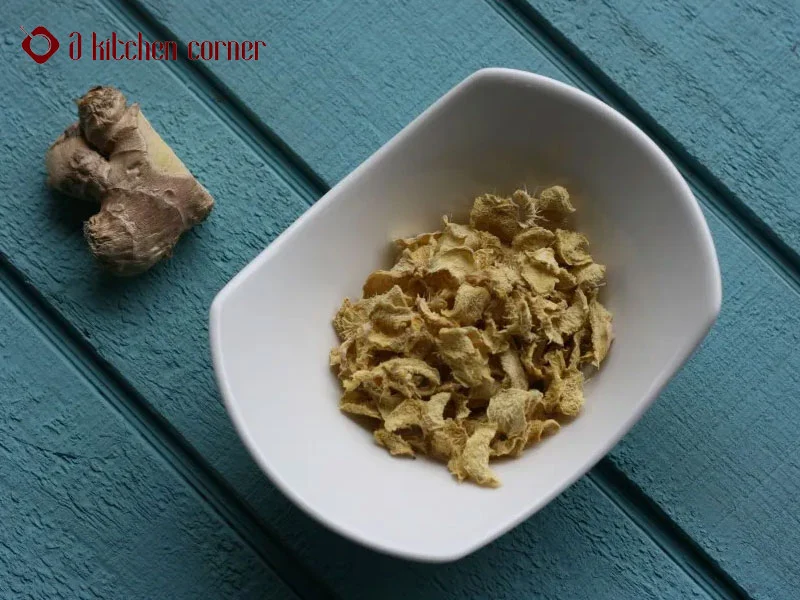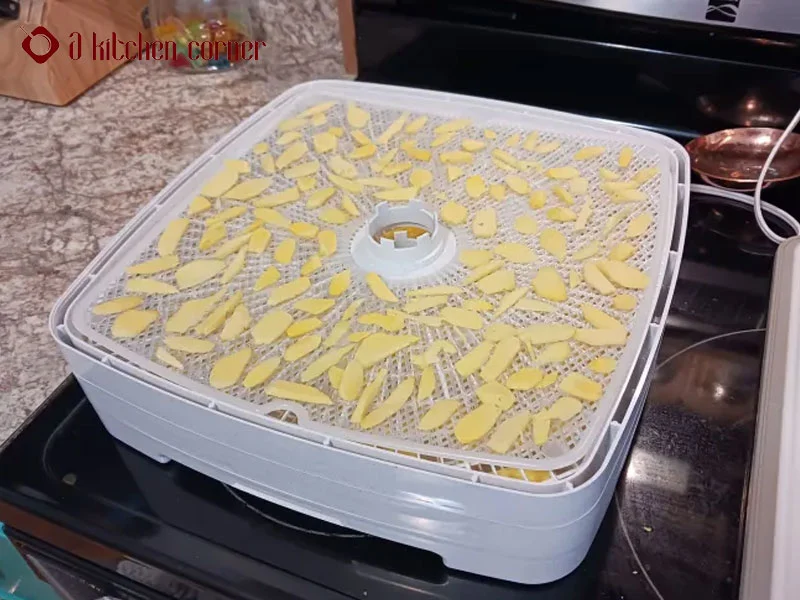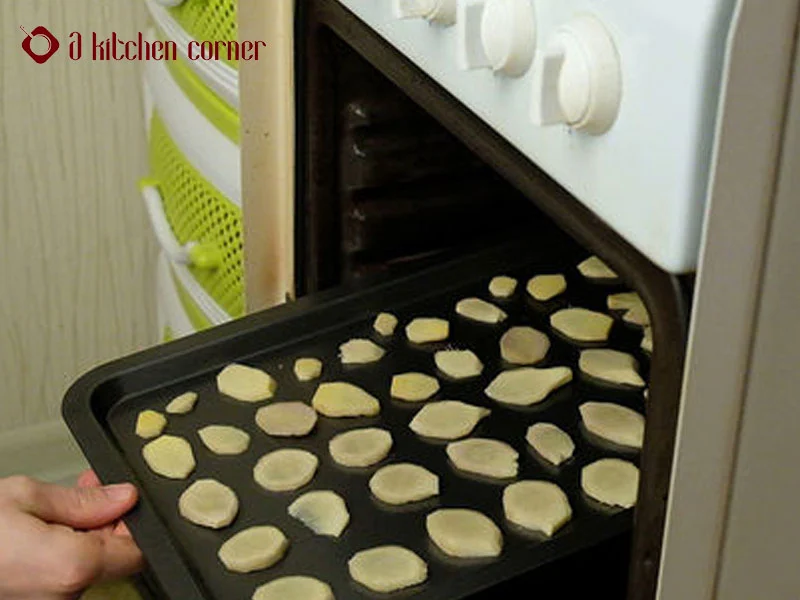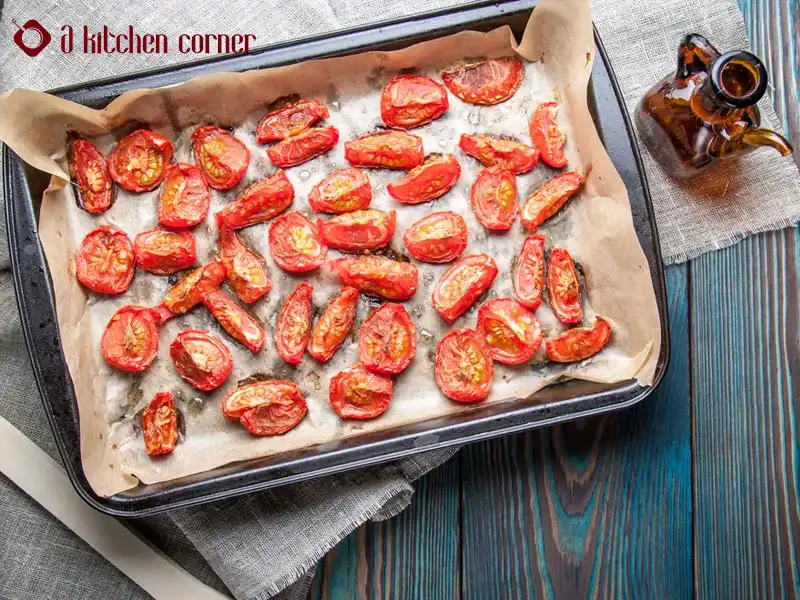
Do you want to spice up the food you prepare? Try dehydrating ginger next. Dehydrating is a great way to preserve food and can boost your culinary creations’ zesty. So, how can you dehydrate something as distinctive as ginger?
We’ll get into great detail on the dehydration of ginger in this blog post. We cover everything needed to get started with your DIY spice rack, from the tools required for dehydration to how to store dried-out bits of ginger. To ensure you get the most out of each piece, we also advise on how to dehydrate successfully.
So let’s start learning how to dehydrate ginger if you’re eager to add new flavors to your cooking.
Contents
How to dehydrate ginger? 5 Easy Methods
Ginger root can be kept for future use by dehydrating it. It can be used in powder for ginger tea, chips with spice, and other foods that call for fresh ginger. This delectable ingredient may be dried with a food dehydrator without losing flavor or texture. What you should know about dehydrating ginger is provided below.
How to dehydrate ginger with a food dehydrator?
The most effective way to dehydrate ginger is this way. For improved drying, a food dehydrator provides sufficient air circulation. A food dehydrator is an ideal kitchen appliance for making a variety of dried goodies, including jerky, fruit leathers, or veggie chips. It’s worth it. Read some tried and tested reviews on dehydrators if you’re about to buy one.
STEPS:
- Carefully wash the ginger roots or rhizomes.
- Use a peeler or a paring knife to remove the rhizomes’ skin.
- Cut the ginger into thin (1/8-inch-thick) pieces.
- On the dehydrator tray, arrange the slices. Make sure they don’t contact each other to prevent uneven dehydration.
- Dehydrate for 3 to 4 hours with the machine set to 135 degrees.
- Grab one and examine it for brittleness. It is prepared if it snaps easily when bent.
- Let it five to ten minutes to cool.

How to dehydrate ginger with a dehydrator – It seems to be easy
Slices of dried ginger should be kept in airtight containers or Ziploc bags. Please put them in a room that is dry and well-ventilated.
How to dehydrate ginger in the microwave?
This is the quickest and simplest technique for dehydrating food. These are the steps to follow:
- Using cool, flowing water, scrub the ginger roots or rhizomes.
- Rhizome peeling (to protect your hands, use kitchen gloves).
- Create equal-sized, thin slices either vertically or horizontally.
- Please put them in a bowl that can go in the microwave or arrange them on the microwave tray. Provide space between slices to improve airflow.
- Approximately 1 1/2 minutes in the microwave. It must have the crispiness of a potato chip. Watch the ginger carefully to prevent over-drying.
- Please keep it in a closed jar or a sealed plastic container. Please put it in a dark, dry, well-ventilated area.
Keep it in a closed jar or a sealed plastic container. Put it in a dark, dry, well-ventilated area.
How to dehydrate ginger in the oven?
How to dehydrate ginger without a dehydrator? Ovens slowly remove the moisture and water. Also, they lack built-in fans, which would improve air circulation.
STEPS:
- The ginger roots or rhizomes should be well-cleaned.
- Use a knife or peeler to remove the skin.
- Cut the pie into thin, fairly equal-sized slices.
- Place the slices on the baking sheet. Make sure there is adequate room between the slices for even drying.
- Lower the oven’s temperature as much as you can.
- The oven door should remain slightly ajar. A fan should be placed in front of the oven to optimize airflow.
- Slices of ginger should be baked for 10 to 15 hours, rotating them every three hours.
- Examine their readiness. Take one out, then smash it. It is ready if it snaps readily.

How to dehydrate ginger without a dehydrator? – You can use your oven
Fill glass jars or another airtight container with the dried slices. Store them somewhere dark, dry, and cool.
Sun-drying ginger
The oldest technique for drying food is to use the sun’s natural heat. Direct sunlight, low humidity, and a high temperature are required for sun drying.
STEPS:
- Rinse the ginger roots or rhizomes under cool, clear water.
- Using your preferred kitchen utensil, peel each piece.
- Slice them thin. Keep them as identical in size as you can.
- Wash the drying rack. Then use a fresh cloth to cover it. This will soak up the moisture as the drying process progresses.
- On the drying tray, place the slices. Once more, you must distribute them uniformly.
- Wrap the tray in crystal-clear glass. Drying will proceed more quickly as a result. Also, this will deter mosquitoes and other bugs.
- The tray outdoors with you. The ginger per day should receive 6-7 hours of direct sunshine. The air should be at least 90 degrees Fahrenheit outside. Don’t sun dry when it’s humid outside.
- Please give it a couple of days to dry. Every two hours, inspect and rotate the slices for the best results. When it’s raining or at night, bring the try inside.
To determine whether the ginger is prepared for storage, look for brittleness. Slices of dried ginger should be kept in airtight packaging. Glass jars can also be used. Your dried ginger should still be stored in a dry, well-ventilated area.
Freeze dehydrating/freeze drying (using a freezer)
Lyophilization is another name for this process. It uses a freezing or below-freezing temperature to let moisture escape.
STEPS:
- Carefully wash the ginger roots or rhizomes.
- Use a knife or peeler to remove the rhizomes’ skin. If you’re unsure about handling such instruments, consider wearing kitchen gloves.
- Slice thinly, either vertically or horizontally. To ensure consistent drying, ensure the slices are around the same size.
- Put the slices on a freezer tray in equal layers. Do not let them cross over.
- Use aluminum foil or a clean towel to cover the tray.
- In the freezer, place the tray. Usually, the freeze-drying procedure takes 1-2 weeks.
- Verify that they have completely frozen solid. When gripped firmly, the fragments should break with ease.
How to dehydrate ginger: Some pro tips for you
Tip 1: Slice the ginger root as thinly as possible before dehydrating it.
This will guarantee the speedy and equal drying of the ginger. Slices that are too thick may burn or dry out more slowly until completely dehydrated. To prevent this, use a sharp knife or mandoline slicer to make even cuts about 1/8 inch thick.
Tips 2: Don’t forget to check on your ginger periodically.
During dehydration, it’s also crucial to periodically check on your ginger. It is crucial to check on the ginger during the drying process periodically; this will assist in revealing whether any burning has occurred due to overdrying or if it has gotten too dry. To avoid affecting other batches of food drying simultaneously, remove the slices from the dehydrator as soon as either of these happens and discard them.
Tip 3: When drying ginger, store it carefully after dehydration to maximize taste retention.
For best results, keep the cooled ginger pieces out of direct sunlight in a sealed container, such as a glass jar with a cover or a zipped plastic bag, for up to six months.
Finally, keep in mind that foods like ginger must be dried slowly. Depending on how thin you have cut each piece, it may take many hours. Still, the effort will be rewarded when you have those wonderfully crispy yet tasty morsels ready for munching.

When drying ginger, store it carefully after dehydration
How to dehydrate ginger – FAQs
Is ginger required to be peeled before dehydrating it?
Indeed, ginger should be peeled before being dried. This is because following dehydration, the skin of ginger can become stiff and challenging to chew. It is also easier for air to reach all regions of the ginger when it is being dried by removing the skin’s outer coat. Thus, carefully peel your ginger before using it to enjoy flavorful and nourishing dried ginger slices or powder.
How should ginger be prepared for dehydration?
Peel the ginger’s skin off with a paring knife or vegetable peeler, then slice it into thin slices and spread them out on a dehydrator rack. Slice the ginger finely and unevenly, then scatter the pieces across a dehydrator tray. The dehydrator should be set between 95°F and 115°F (35°C and 46°C) and left on for three to eight hours or until all of the slices are dry and brittle. Place the dried ginger in a container and seal it, keeping moisture and light away from it.
Is dried ginger healthy for you?
Certainly, dried ginger has health benefits. It has various necessary nutrients, including Vitamin B6, Magnesium, Potassium, and Zinc. According to research, dehydrated ginger contains strong anti-inflammatory properties that can reduce inflammation.
By activating digestive enzymes and lowering bloating, dehydrated ginger also aids in bettering digestion. Finally, its abundant antioxidant content can strengthen your immune system. Dehydrated ginger is an excellent complement to any diet because of all these advantages.
What is ginger dehydrated used for?
Dehydrated ginger can be ground into a powder and added to soups, curries, and casseroles for added flavor. It can also be used to make tea. Dehydrated ginger is a wonderful addition to any kitchen because of its adaptability and delectable flavor.
Final thoughts
Spices like ginger have a lot of beneficial nutrients and phytochemicals. Dehydrating ginger is required to reap these benefits all year long unless you have an endless supply of fresh ginger. We hope that you get how to dehydrate ginger using the methods mentioned in the post.
As you now know, dehydration is a straightforward method of food preservation and is typically the simplest choice. To effectively dehydrate ginger, adhere to each technique’s instructions. You don’t need to be concerned about making mistakes. Even if you make a few mistakes, drying should be enjoyable and educational.
>> Related post: How to dehydrate meat for jerky? A beginner’s guide to making jerky at home








